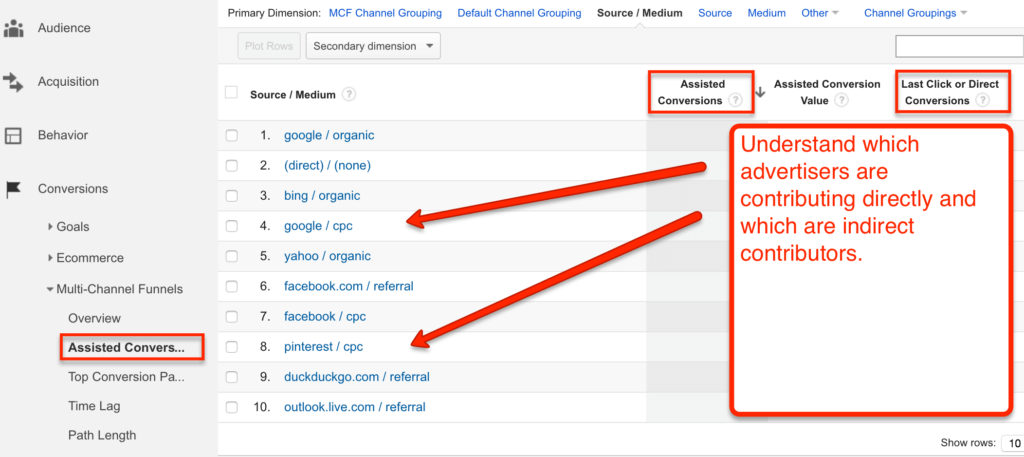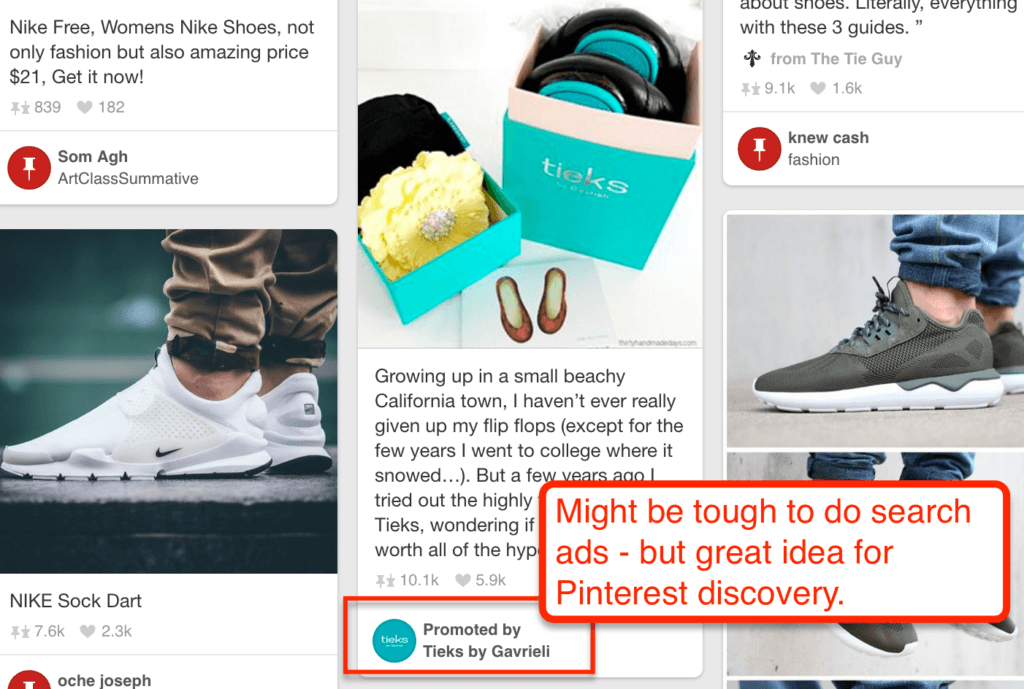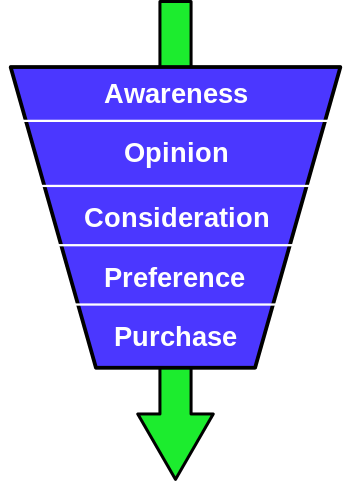Online advertising is an incredibly effective way to promote your business and attract a wide array of customers. Unlike organic marketing strategies, you can get started right now.
And unlike traditional advertising like TV, radio or billboards, you can advertise effectively through 100% self-service platforms. You can target any audience in any country through diverse platforms at any time.
And that is what I covered in the first post in this series – how to advertise online effectively.
But remember that your competitors can advertise as easily as you can.
How do you go beyond launching an ad campaign to making it even more effective and even more profitable?
There are tons of tips and tactics for every platform. But like improving your website speed – every tip that works for one person might not work for you.
Instead of a grab bag of tips, here’s the 5 step framework that you can use to improve your campaigns whether you are running ads on Reddit, Google, Facebook, Quora, DuckDuckGo or something completely different.
1. Understand Your Audience
This bit is marketing 101, however, truly knowing and understanding your audience doesn’t come from just evaluating what you know, it comes from evaluating the type of people you’re marketing to.
You can have the best ad creative campaign in the world, but if you are showing it to the wrong people then you’ll never truly improve.
Defining Who Your Audience Is
The first question isn’t too complex — who the are they? Are they CEOs of tech corporations? Are they home business owners selling on Etsy? Are they local small business owners?
Think about who you are really trying to do business with instead of what product you are trying to sell – “personas” in the jargon.
Without answering this question, you won’t be able to get down to the nitty gritty, such as your audience’s wants and needs.
Defining What Your Audience Wants
Once you have your target audience solidified, you’ll want to nail down what they actually want. What wants do they have? What problems do they need solved?
How do they currently try to solve those problems? If you are selling shoes – does your audience want cutting-edge features, fun styles or just a good deal?
Defining Where Your Audience Is
It’s all downhill once you have your audience, right? Not quite. You can craft perfect messages that your audience would gobble up in a second, but there’s one problem: if you’re putting that message out on a platform that they don’t use, it’ll fall on deaf ears.
Take some time to figure out where your audience spends their time. Look at your analytics, especially the multi-channel section. Run tests on different platforms.
Google has the most intuitive platform – if someone searches for “buy shoes online” – they probably want to buy shoes online. But stylish, impulse, novel or high-consideration purchases might not work as well on Google.
You might get better results with Pinterest ads or YouTube ads or even Instagram ads.
2. Understand Your Sales Funnel
To get ahead in advertising, you have to know exactly what your funnel looks like – and what the objective for each ad is.
A “funnel” is how you move someone from being aware of your product to actually purchasing it.
An ad promising “20% this weekend only!” has the objective of getting someone that is at the “bottom of the funnel” to purchase now.
In contrast, an ad for “Discover the stability of trail running shoes!” has the objective of establishing awareness of a product line.
Usually the most obvious ad opportunities are also the most competitive (ie, expensive). If you are a small shoe retailer, you probably don’t have the budget or data to compete with Zappos and OnlineShoes for “buy shoes online” in Google.
But if you can find the sweets spots in your sales funnel, you can optimize what’s already working for you and your ads to work together.
So, if you’re already killing it by driving sales from your email list, you can focus your paid advertising budget on something like educational searches that will get people to your email list (objective).
Define the full customer journey/funnel
What is the process that your customer goes through from initial thought to purchase? What do they research, where do they go, and what problems do they have at every step?
Say we have a recreational runner who needs a new pair of shoes. Let’s get inside their head for a minute.
“I think I need new running shoes” → checks to see how often running shoes should be replaced.
“I like my current shoes” → checks to see the latest model in the brand.
“What are the reviews of the newest model?” → looks for shoe reviews and alternatives.
“Maybe I need running shoes with a lower heel to toe ratio” → looks for shoes based on heel to toe ratio.
“Who sells these shoes” → looks for retailers with shoes in stock.
“These retailers’ shipping is expensive” → looks for coupons or promos.
“Ok whatever, I’m ready to buy” → purchases shoes.
It’s pretty straightforward right? Just think through every step a potential customer would take – and you have specific ideas for improvement at practically every step.
Decide on your offer & plan for purchase
What are you actually offering? Do you have a place on your website to actually send any takers to?
For example, if you’re advertising an educational post, don’t send potential customers to your latest sales page.
But, you do need to plan ahead for when your potential customers are ready to buy/convert. Look into retargeting them or pitching an email signup.
When they are further down the funnel – then pitch the sale.
3. Understand Your Traffic Source
Now that you have your personas and sales funnel thoroughly defined, you’ll want to get a grasp on your traffic source. Chances are, you’re already using (or more) of the popular online advertising platforms, such as Google Adwords or Facebook Ads.
These platforms give you enough and more information on your traffic sources.
Start with the platform where your audience hangs out AND makes the most sense to you
As I mentioned above, your analytics are a great way of understand your traffic source.
On each of these advertising platforms, your analytics section will give you an idea of where your audience is, which will affect where your ads should be showing.
Read the manual
Google Ads and other analytics platforms are great. But they’ll only get you so far if you don’t read the manual. These platforms (Google Ads and Facebook specifically) have default settings that won’t help you in the long-run.
Instead, you’ll want to get a thorough understanding of how to read the data and how to make tweaks based on the trends you’re seeing.
Did you know that building campaigns with Facebook’s Power Editor instead of their web interface will open up many more options? Facebook wants to push advertisers through a simple default interface, but advertisers that “read the manual” and use the Power Editor get an edge.
Self-serve ad platforms are built to be easy. But take time to read the Getting Started sections for you platform of choice and understand all your options.
Start small & look for wins that put you ahead
When you’re diving into traffic sources and ad platforms, it’s easy to get swept up in the big picture. You see search traffic for broad keywords or big audiences and immediately you think, “Yes! Look at all of the traffic!”
You have to slow down. Instead, prioritize small wins to get qualified traffic to your site. Start niche and stay niche until you are ahead of the game. Get some small wins, and then scale your efforts to reach those broader targets.
For example, on Google, instead of burning budget on a term like “buy online shoes” – go for “long-distance trail running shoes.” Figure out what works there and add.
Or if you are on Facebook, instead of targeting Women under 40 with your ad, start with Women 30 to 40 who live in Atlanta and like Running. See what works and add audience from there.
Most all self-serve platforms from Google to Facebook to Quora and even Spotify allow campaigns starting at just $1/day. You can start test campaigns for very cheap so that you can get your own data. And your own data will allow you to profitably expand and improve your campaign over reading a blog post with best practices.
4. Optimization & Testing
There are four elements in an ad campaign: an ad, an offer, a landing page, and the follow-up. Optimizing your campaign means you look for improvement in each element in turn. Then, as each improves incrementally, you get aggregate gains that move your campaign ahead of the competition.
Ad
Let’s dive back into Google Ads for a minute. We want to look at how different ad groups, ads, and even keywords are performing. Take advantage of tools such as the keyword planner, which can help you develop new ad groups and keywords based on your site and your offer. This can help inform your ads.
Generally – the more ads you create, the better you’ll do. The more you test, the more you’ll understand what your customers like and don’t like!
Some of the best advertisers will create more than 25 headlines to test for each ad. Now – that might not be the best use of a busy business owners’ time. But – the core idea is that you should try lots of variations to see what works instead of guessing at the one perfect ad.
Offer
At the end of the day, no amount of advertising can make up for a horrible offer. Keep in mind that your “offer” doesn’t necessarily mean your product.
Your offer can be lots of things: the content you provide on your site, the way you sell your product, sale or promo, or even loyalty programs or shoppers’ clubs – basically, anything that a potential reader or customer would be interested in!
A good offer goes further than any online marketing technique can take you. Make sure you’re offering something valuable to your customers that fits their wants and needs – and where they are in the funnel/buying process.
Landing Page
A landing page is also a prime opportunity to sell your customers on your offer. Since it’s such a valuable asset, you should make every effort to make it perfect – from the headline, to the copy, to the images and call to action. A well optimized landing page is crucial to setting your business up for success.
Say you set up a Google Ads campaign for people looking for landscaping companies in Atlanta. They click your ad, triggered by a keyword in your new ad group, and land on a page that talks about the best landscaping tips for DIYers.
As you can imagine, this probably wouldn’t be very effective. Instead of serving a landing page targeted to someone interested in doing business with you, you served a landing page targeted to someone in the discovery phase trying to find solutions.
Basically, each landing page on your website should have a specific focus – and your ads should match the focus of the page you’re targeting.
Follow-up
Believe it or not, your follow-up with visitors counts just as much – if not more – than the ad campaign itself. You are essentially targeting someone who interacted with your site, but did not convert.
So, say someone is in the discovery phase, and they come to your landing page for “best landscaping tips.” They read about your tips, but do not fill out a lead form to get more information about doing business with you.
You have a couple options. You may retarget them with an ad that promotes a special discount you’re running, that will bring them to a landing page promoting that discount.
You can also use emails to retarget. Popular platforms like MailChimp integrate this feature into their platform so that any business can do “email automation.” You’ve totally been on the receiving end of this right? You were checking something out on an online store but click off. Next thing you know, you have an email in your inbox that says you get 20% off any item for the next 3 hours!
Like any tactic, you can burn through these tactics. There is a fine line between friendly follow up and maddening spam.
But just like your landing page, your retargeting efforts are crucial to advertising success. You want to be sure you’re serving the right people with the right message at the right time.
5. Analysis & Refinement
Improving ad campaigns is a cycle. If you are making more money, then you can spend more money. If you are driving your costs down, then you can spend more.
Understanding the cycle and refining based on *your* data will put you ahead of competitors.*
*Sometimes a research tool like SEMrush can help get you out of an analysis rut. Highly recommend a free trial just to at least check on what your campaigns look like compared to a benchmark.
Stop what is not working
Nobody’s perfect. I guarantee when you dive into your analytics, you’ll find that some things just don’t work. Perhaps it’s a demographic you’re targeting, a device you’re showing ads on, keywords you’re using, or even the ads you’re showing. They may get impressions and clicks, but if they’re not converting? Stop them. You’ve now optimized part of your campaign. Standing still is better than going backwards.
Do more of what is working
With that said, you can’t just take that money and throw it into savings. Instead, invest it into what is working. Raise your bids on keywords, create more successful ads, spend more time speaking to demographics who convert, etc. At the end of the day, the money you spend investing in areas of your advertising that are working, the more money you’ll make.
Rinse and repeat
Online advertising isn’t a one and done deal. Things are constantly changing and evolving. And that means your campaigns need to constantly change and evolve.
After you discover what does and doesn’t work, you’re not done! You need to continually check on the progress of your campaigns and repeat the process all over again: figure out what doesn’t work — kill it; figure out what does — invest in it.
Next Steps
Improving your ad campaigns can be a daunting problem with no obvious starting point. Copying your competitors doesn’t get you ahead and trying a grab bag of tips doesn’t help either.
But like any daunting problem – break the campaign into a series of small, straightforward problems. Solve each in turn and you’ll end up with an ad campaign that builds your business.
Read my post on how to advertise your website online for other ideas!






